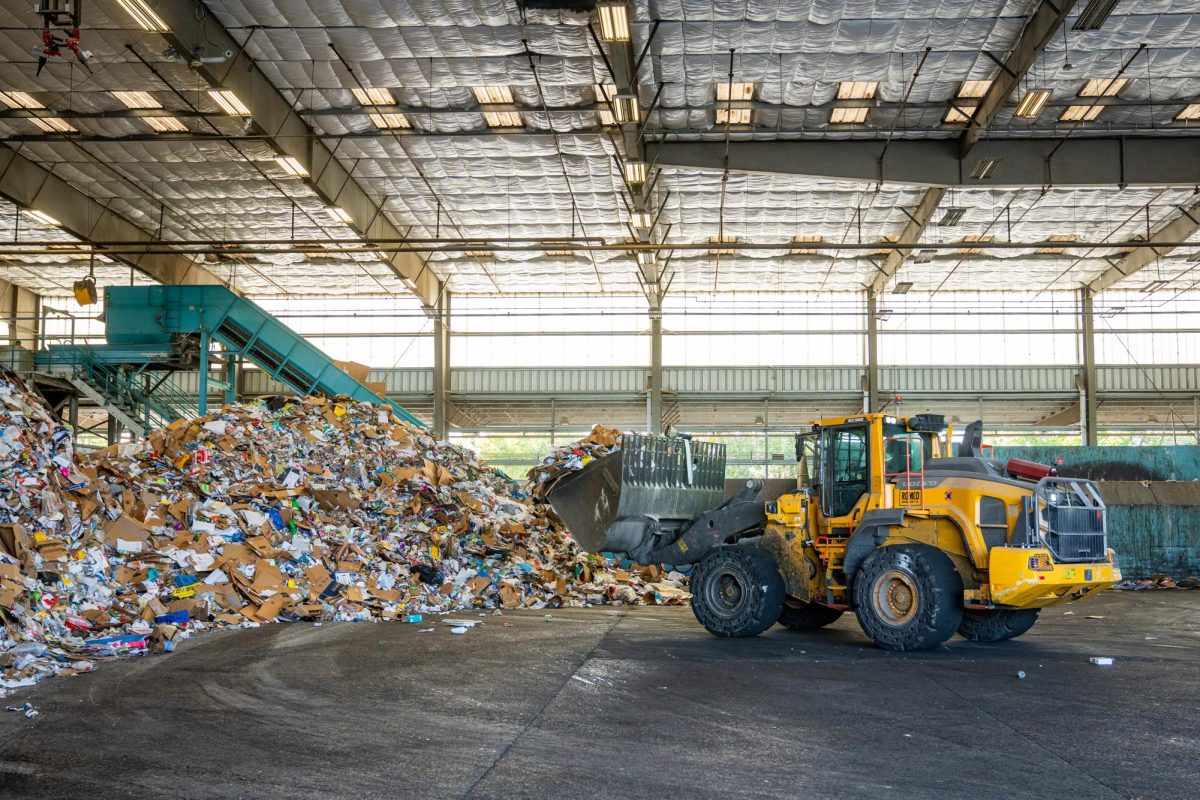Grace Xu, General News Reporter
July 31, 2023
Twenty-one percent of material recycled at UT is contaminated and must take a longer, more costly route to the landfill.
“We can’t process (contamination) or sell it,” said Alexandra Gyarfas, director of marketing at Balcones Resources, the material recovery facility that processes recycled waste from UT and the city of Austin. “(Contamination) causes not only operational strain but also environmental strain. … It takes a longer, more expensive trip to the landfill. … It also impacts our employee safety.”
Gyarfas said particularly dangerous contaminants include batteries, tanglers and human, pet and medical waste.
Gyarfas said lithium-ion batteries, which are rechargeable components found in electronic devices, often catch fire — a problem worsened by the prevalence of paper and cardboard in recycling facilities. In 2021, the Environmental Protection Agency reported that 78% of material recovery facilities that experienced a lithium-ion battery fire called emergency responders at least once, a number they believe is underreported due to lack of publicity.
Gyarfas said tanglers are “any stringy material that can tie around a worker or our machinery.” This includes ropes, light strings, textiles and anything else that can require someone to put themselves at risk to untangle the material.
“I don’t think people realize how much people are touching your stuff,” Gyarfas said. “A general good rule to avoid contamination is don’t put anything in there that you wouldn’t be comfortable touching yourself like food or obviously sharp needles, because we don’t want those folks that are manually sorting through the material to get poked, hurt, or contaminated.”
Gyarfas said single-stream recycling, where recycling is collected at the consumer level, also causes some contamination.
“Single-stream is more convenient because you can put everything together, and you don’t have to think too much about it,” Gyarfas said. “But that typically results in what we call ‘wishcycling,’ which is people placing items in the recycling bin, because there’s an assumption that the recycler will know what to do with them and if it is recyclable, we’ll figure it out. When in reality, that just causes a lot of operational problems for us and contamination.”
At UT, senior Zero Waste coordinator Lindsey Hutchison said she focuses on making recycling “easier and more understandable for people.”
“We looked at what are the most common items and commonly confusing items on campus (for our posters),” Hutchison said. “We also have an online database that we developed for campus … where you can look up items … and it’ll give guidance about what to do with that item on campus. We’re always happy to take questions, we have social media, you can reach us through that as well.”
To combat ‘wishcycling,’ Hutchison advised students to throw out items they are unsure can be recycled.
“(Students should) use the trash this time until you know. Hopefully, you’ll use that poster or reach out to us and get that answer for next time,” Hutchison said.
Hutchison also highlighted programs for items that can be recycled without the single-stream process. She said students can use battery recycling programs and opportunities like Trash to Treasure or MoveOutATX to donate their belongings during move-out. The Zero Waste Program’s website has more guidance on properly disposing items on campus or at home.

